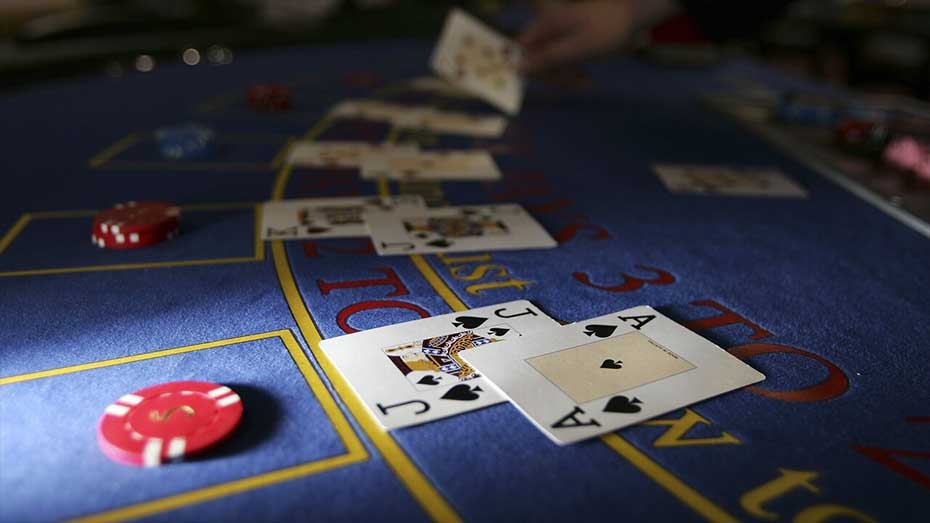Experience the Thrill | Teen Patti Mastery at Bouncingball8
Teen Patti, also known as 3 Patti, stands as a widely embraced card game originating from India. Alternately referred to as Three Cards, Flush, and Flash, this captivating game draws inspiration from English counterparts such as 3 Card Brag and Poker, enthralling players across generations. Boasting straightforward rules and strategic gameplay, 3 Patti has evolved into a prominent feature of India’s social events, festivals, and digital gaming platforms.

In recent times, the Teen Patti card game has experienced a surge in popularity in the online realm. Various online platforms and mobile applications provide the option to download the Teen Patti real cash game, facilitating gameplay with friends and family in offline settings. Moreover, enthusiasts can engage in the thrill of the Teen Patti real cash game, pitting their skills against real players online for a chance to secure actual monetary rewards.
Teen Patti Hand Rankings Guide – Understanding the Hierarchy
Mastering the art of playing Teen Patti begins with grasping the essential Teen Patti rules, particularly the intricate hand rankings that dictate the game’s dynamics. The game comprises six distinct sequences, with the esteemed “Three of a Kind” (Trail or Trio) reigning supreme as the highest, while the modest “High Card” holds the lowest position in the comprehensive 3 Patti hand rankings chart. Below, we outline the 3 Patti hand rankings in descending order:

Trail/Three of a Kind/Trio
A Trail, also known as Trio or Three of a Kind, materializes when a player holds three cards of the same rank. Notably, a trio of aces (A♥️A♠️A♣️) represents the pinnacle of this category, while triple twos (2♣️2♦️2♥️) constitute the lowest-ranking trail combination.
Pure Sequence/Straight Run
The Pure Sequence, or Straight Run, requires three consecutive cards of the same suit. For instance, A♦️ 2♦️ 3♦️ stands as the highest-ranking pure sequence, while A♦️ K♦️Q♦️ and K♦️ Q♦️ J♦️ follow closely. The lowest pure sequence manifests as 4♦️ 3♦️ 2♦️. Notably, 2♦️ A♦️ K♦️ fails to constitute a valid pure sequence.
Sequence/Normal Run
Comprising three consecutive cards without uniform suits, the Normal Run holds its own in the hierarchy. A♠️2♥️3♠️ marks the pinnacle of normal runs, succeeded by A♥️K♣️Q♠️, K♦️Q♠️J♥️, and so forth, culminating in 4♠️3♥️2♦️.
Color/Flush
The Flush, or Color, necessitates three cards of the same suit, irrespective of sequential order. For example, A♣️ Q♣️ J♣️ constitutes a valid color or flush. In case of a tie, the comparison involves the highest card, followed by the second highest, and, if necessary, the lowest card ranks. The highest-ranking flush is A-K-J, while the lowest is 5-3-2.
Pair
A Pair involves two cards of matching rank accompanied by a third kicker card. Whether it’s A-A-K or J-J-9, a pair is formed. The summit of pair rankings is held by A-A-K, with 2-2-3 being the lowest-ranking pair.
High Card or No Pair
The High Card or No Pair scenario arises when three cards fail to form any specific combinations. The highest-ranking high card hand comprises A-K-J of mixed suits, while the lowest-ranking hand is 5-3-2.
Playing Teen Patti Online: A Guide to Teen Patti Gameplay Rules
In the realm of online gaming, mastering the art of Teen Patti is a thrilling endeavor. The objective of this 3 Patti card game is clear-cut – formulate the most potent three-card hand combination to claim the coveted pot. As the gameplay unfolds, participants strategically aim to amplify the pot size, vying for the highest possible winnings. Ultimately, victory rests in the hands of the player who boasts the most formidable hand combination as the game reaches its conclusion.

Shuffling and Dealing in Accordance with 3 Patti Rules
The pivotal act of shuffling sets the stage for the excitement. The dealer, armed with a standard 52-card deck devoid of jokers, skillfully shuffles before initiating the deal. Before the cards are distributed, players contribute a predetermined boot amount to the pot, injecting an element of anticipation. Subsequently, the dealer dispenses three cards to each player, adhering to a clockwise distribution. The cards remain concealed, adding an air of mystery to the initial stage of the game.
Teen Patti Betting Procedure Rules
With the cards in hand, the game unfolds in a clockwise fashion, commencing with the player to the left of the dealer. The players, armed with their concealed cards, strategically place bets based on the perceived strength of their hand. This phase introduces intriguing choices – players can opt to place bets without glimpsing their cards (playing blind) or after assessing their hand (playing seen). Alternatively, participants retain the option to fold, signaling a withdrawal from the current round and forfeiting their contribution to the pot.
Teen Patti Guidelines for Players Opting to Play Blind
In adherence to the rules governing Teen Patti, a player opting to play blind assumes a distinct strategy, navigating the game without the privilege of assessing their cards beforehand. Embracing this daring approach comes with its own set of regulations to ensure fair play and an exhilarating gaming experience.

Blind Betting Limits
A blind player is constrained by the rule that prohibits them from inspecting their cards prior to placing a bet. The bet made by a blind participant must be equivalent to, but not surpass, twice the cumulative amount present in the pot. Should the first player be a blind participant, their bet must equal the boot amount or exceed it.
Establishing the Stake Amount
The amount committed by the blind player becomes the stake amount, establishing a baseline for subsequent bets. Subsequent players in the round are then confronted with a pivotal decision – they must either match the stake amount or exceed it when placing their own bets. However, seen players, who have had the opportunity to view their cards, are subject to a distinct rule: their bets must be double the stake amount.
Showdown and Conditions
A blind player, exhibiting courage and curiosity, has the option to request a show. In this scenario, the hands of the two players are laid bare, and the victor claims the entire pot. Nevertheless, specific conditions govern this show request:
Equalizing the Show Request
In the event that both participants are seen players, and either party decides to call for a show, the initiator must contribute twice the ongoing stake amount to the pot.
Showdown Outcome
If, upon unveiling their hands, both players exhibit equal strength, the player instigating the show inevitably loses the hand.
Teen Patti Regulations for Players in the Seen Category
In the intricate tapestry of Teen Patti gameplay, seen players operate under a distinct set of rules, introducing varied options such as chaal, show, sideshow, or the possibility of folding. As a seen player, strategic decisions unfold after glimpsing the concealed cards, presenting a spectrum of choices to shape the trajectory of the game.

Chaal as a Vital Move for Seen Players
For a seen player aiming to continue their participation in the game post-card revelation, the primary move is to play chaal. In executing this maneuver, the player places a bet, a figure that must fall within the range of two to four times the ongoing stake (or the boot, if they are the initial participant in the round). If the predecessor was a blind player, the bet equates to the stake amount. In the case of the preceding player being a seen participant, half of their bet establishes the new stake amount.
Show and Sideshow Dynamics
Seen players harbor the authority to request a show, aligning with the regulations previously outlined. Additionally, they possess the intriguing option of soliciting a sideshow with another player. Pertaining to the teen patti rules for sideshow, the dynamics unfold as follows:
Teen Patti Showdown Rules Unveiled
The crescendo of a 3 Patti game is the exhilarating showdown, a momentous juncture where only two contenders stand, while others gracefully bow out. The rules governing the showdown, or show, in Teen Patti orchestrate a captivating climax to the game, defined by specific dynamics and strategic moves:
Showdown Prerequisites
The showdown materializes when the tableau is reduced to a mere pair of players, with others gracefully conceding defeat and folding their hands.
Blind Player Protocol
For blind players, a show beckons when they find themselves facing off against another sole contender. Irrespective of whether the opposing player is also playing blind, the initiating blind player must contribute an amount matching the current stake to the pot.
Restrictions on Seen Players
Notably, a seen player is barred from requesting a show from a blind player. Their options remain confined to betting or folding, steering clear of the show dynamics in this specific scenario.
Show Initiative by Seen Players
In the captivating scenario where both players have unveiled their cards and stand as seen participants, either can elect to call for a show. This demand entails a payment of twice the existing stake amount.
Showdown Dynamics
During the show, a riveting comparison unfolds as the cards of both participants are laid bare. The verdict is crystal clear – the player flaunting the higher-ranking hand emerges triumphant, claiming the entire pot. In the event of a tie, a subtle twist ensues: the player abstaining from the show request is declared the winner.
Variety in Teen Patti Rules: Exploring Diverse Gameplay
The realm of Teen Patti boasts an array of rule variations, allowing players to tailor their gaming experience to their preferences. These variations introduce distinctive dynamics, influencing aspects such as betting limits, blind bets, and the inclusion of wild cards or exposed cards. As the Teen Patti game evolves, players can engage in thrilling adaptations that redefine traditional gameplay. Here are some notable variations that add a unique twist to the classic Teen Patti experience:

Muflis
In Muflis, the conventional hierarchy is inverted, granting low-value cards precedence over high-value ones. For instance, while A-A-A triumphs over K-K-K in traditional Teen Patti, Muflis dictates that K-K-K prevails over A-A-A.
Best-of-Four
Best-of-Four introduces a dynamic shift by dealing four cards to each player. The challenge lies in crafting the most formidable three-card hand from the four cards received.
Community
Drawing inspiration from poker, the Community variation involves the dealer distributing both hole cards and community cards. Players must strategically leverage the community cards to fashion their optimal three-card combinations.
Stud
This variation mirrors the Stud Poker game, featuring a combination of face-down and face-up cards dealt by the dealer. Participants aim to assemble the most potent hands using three cards amidst this unique card distribution.
Bust Card Draw
In Bust Card Draw, the dealer randomly draws a card, prompting the removal of all cards of the same rank from the game. Players are compelled to fold any affected cards in response to this unexpected elimination.
Draw
The Draw variation injects an intriguing element by allocating each player a card before the initial bet. Players retain the option to discard undesirable cards and acquire replacements in this captivating twist on the traditional Teen Patti format.
Cobra
Cobra adds a visual element to the game, as players are required to pick their cards and place them on their foreheads for opponents to scrutinize. This variation introduces an additional layer of strategy as players must navigate the game with partially revealed hands.
FAQs
Conclusion
In conclusion, Teen Patti at Bouncingball8 offers a comprehensive guide to mastering the popular card game, providing insights into hand rankings, gameplay rules, and variations that add an exciting twist to the traditional format. Whether engaging in offline matches with friends or exploring the thrill of real cash games online, this guide equips players with the knowledge needed to navigate the complexities of Teen Patti and enjoy the exhilarating journey of strategic play and showdowns.












